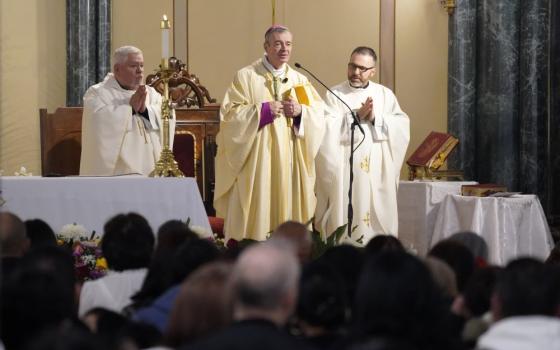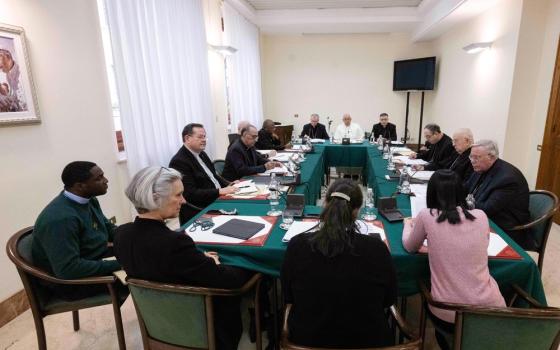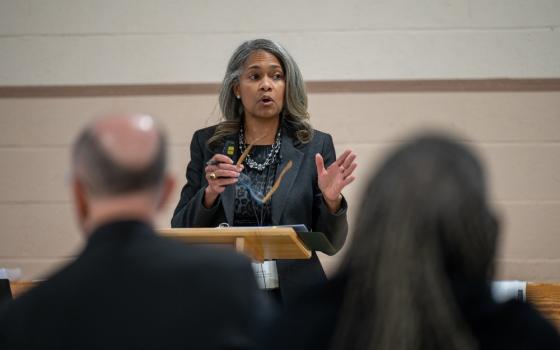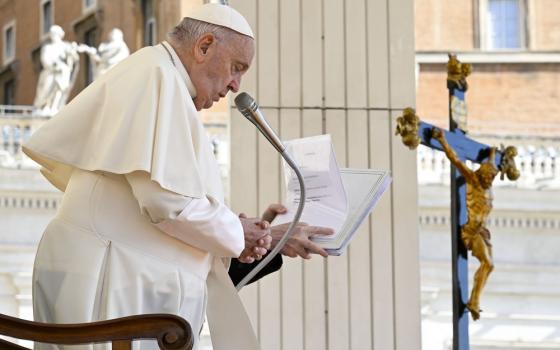
WASHINGTON -- A new nationwide study of Catholic parish life has found that U.S. parishes continue to get bigger, more complex and more diverse. It reinforces earlier studies on the growth of lay ecclesial ministries and confirms that parish life is increasingly multicultural.
In just the past 10 years the average number of registered parishioners per parish has grown 45 percent, from 2,260 in 2000 to 3,277 in 2010, said the study, titled “The Changing Face of U.S. Catholic Parishes.”
Half of U.S. parishes celebrate four or more Masses each weekend, the study found, while 28 percent celebrate five or more. The average number of weekend Masses per parish has increased from 3.5 in 2000 to 3.8 in 2010. The number of diocesan priests celebrating these Masses has declined by 11 percent in the past decade.
The Center for Applied Research in the Apostolate, in collaboration with five national Catholic organizations, conducted the research as one phase of a larger long-term project begun in 1992, “Emerging Models of Parish Leadership.” The Lilly Endowment has been funding the study as part of its program to enhance ministerial effectiveness in the Catholic church and other Christian churches.
CARA is an independent Catholic research organization based at Georgetown University in Washington.
The study said the significant increase in the size of the average Catholic parish was due to a combination of U.S. Catholic population growth and the closing or consolidation of many parishes, especially smaller ones.
“Smaller parishes are more likely than larger parishes to be closed or consolidated,” the study said. It added that from 2005 to 2010 “40 percent of all growth in registered parishioners” came from Hispanic/Latino Catholics.
The growth of the country’s Hispanic population has also had an impact on the cultural life of many parishes. In 2000, the study said, 22 percent of parishes had at least one Mass a month in a language other than English; 10 years later, 29 percent did so.
“Most of these Masses, 81 percent, are in Spanish,” it added. “Overall, about 6 percent of all Masses [celebrated in U.S. Catholic parishes today] -- weekday and weekend -- are celebrated in Spanish.”
CARA described as “multicultural” those parishes that had regular Masses in a language other than English or Latin, that had less than 40 percent non-Hispanic white membership, or that had a probability of at least 33 percent that any two randomly selected parishioners would be of different racial or ethnic background. Of the 846 parishes responding to the survey, it said, 323 -- 38 percent -- met at least one of the criteria to be described as multicultural.
The study said that the number of Catholic parishes -- which peaked in 1990 at 19,620 -- dropped by 1,359, or 7.1 percent, in the latest decade to almost the same number as in 1965. The U.S. Catholic population is currently about 77.7 million, about 75 percent higher than it was 40 years ago, when it was served by roughly the same number of parishes, the study said.
It projected that by 2050 the nation’s Catholic population could range from a low of 95.4 million to a high of 128 million.
CARA found that the long-term decline in U.S. Catholic Mass attendance since the 1950s seems to have leveled off since 2000. “As Mass attendance remains steady and the Catholic population grows, this suggests increasing demands on parishes as the real number of Catholics attending and needing sacraments increases,” the study said.
 The survey behind the study, an imposingly detailed 11-page questionnaire sent to more than 5,500 U.S. parishes, got responses from 846 parishes, or 15.3 percent, giving it a statistical margin of error of plus or minus 3.3 percent. About one-third of the parishes surveyed were based on random sampling, but nearly two-thirds of the responses came from parishes contacted by what sociologists refer to as “stratified sampling” to ensure that Catholic demographics across the country were more accurately represented.
The survey behind the study, an imposingly detailed 11-page questionnaire sent to more than 5,500 U.S. parishes, got responses from 846 parishes, or 15.3 percent, giving it a statistical margin of error of plus or minus 3.3 percent. About one-third of the parishes surveyed were based on random sampling, but nearly two-thirds of the responses came from parishes contacted by what sociologists refer to as “stratified sampling” to ensure that Catholic demographics across the country were more accurately represented.
The study found that lay ecclesial ministry -- somewhat formally defined in recent years as working at least 20 hours a week in paid parish employment as a recognized and authorized church minister -- has continued to grow, as has the number permanent deacons.
Updating several previous studies, the latest CARA study estimated that the number of lay ecclesial ministers in U.S. Catholic parishes has nearly doubled in the past 20 years, rising from less than 22,000 in the early 1990s to nearly 38,000 last year.
The number of diocesan and religious priests continues to decline -- and still fewer are available for regular pastoral ministry as more of them reach retirement years, the study found.
One chart in the study shows the increase in permanent deacons since 1980 largely offsetting the decrease in priests, but the drop in women religious over those years was tremendous -- from about 130,000 in 1980 to 56,000 in 2010.
Reflecting the growing lack of sufficient priests to staff all parishes, 5 percent of the parishes were led by a parish life coordinator -- a deacon, religious brother or sister, or layperson -- rather than a resident pastor.
The study also said 7 percent of the parishes surveyed had been affected since 2005 by merger with another parish or by boundary or membership changes caused by the closing of another parish.
Of the parishes participating in the survey, 230, or 27 percent, said they were in some way paired -- clustered, linked, yoked, twinned, sister parishes, depending on the terminology used in a given diocese -- with at least one other parish. Such pairings involve sharing of personnel and often of many programs, such as religious education, marriage preparation or social ministry.
More than half of all parish staff, including those not engaged in liturgical, catechetical or other ministries, were women.
Among paid staff engaged in ecclesial ministry, only 30 percent were diocesan or religious priests. Thirty-seven percent were laywomen, 5 percent women religious, 14 percent permanent deacons, 13 percent laymen, and 1 percent religious brothers.
Collaborating with CARA on the “Emerging Models of Parish Leadership” project are the National Association for Lay Ministry, Conference for Pastoral Planning and Council Development, National Association of Church Personnel Administrators, National Catholic Young Adult Ministry Association and National Federation of Priests Councils.
[Jerry Filteau is NCR Washington correspondent.]
ON THE WEB
A complete copy of the study is available here: www.emergingmodels.org/article.cfm?id=75



